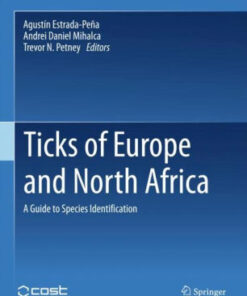(PDF) Water Purification By Alexandru Mihai Grumezescu
$22.00
Download instantly Water Purification By Alexandru Mihai Grumezescu. It is ebook in PDF format.
ISBN-10: 0128043008 ISBN-13: 9780128043004
Preview
This is the PDF eBook version for Water Purification By Alexandru Mihai Grumezescu
Table of Contents
Series Foreword
Series Preface
Volume Preface
1: Recent advances in using magnetic materials for environmental applications
Abstract
1. Introduction
2. Nanomaterials for Wastewater Treatment
3. Magnetic Nanoparticles in Wastewater Treatment
4. Wastewater Treatment Method
5. Conclusions
Acknowledgement
2: Nanotechnology for water purification: applications of nanotechnology methods in wastewater treatment
Abstract
1. Introduction
2. Importance of Nanotechnology in Water Purification
3. Applications of Nanotechnology in Water or Wastewater Treatment
4. Regeneration of Nanoparticles
5. Safety, Toxicity, and Environmental Impact of Nanomaterials
6. Limitations and Research Needs
7. Conclusions
3: Nanotechnology for drinking water purification
Abstract
1. Introduction
2. Overview of the Water Purification Process
3. Applications of Nanotechnology in Water Purification
4. Concluding Remarks
4: Application of nanotechnology in drinking water purification
Abstract
1. Introduction
2. Antimicrobial Nanotechnology for Water Disinfection
3. Zero-Valent Iron Nanoparticles
4. Advanced Oxidation Processes with Nanostructured Photocatalysts
5. Membranes for Water Purification Based on Nanotechnology
6. Nanoadsorbent for Water Purification
7. Conclusions
5: Nanotechnology-based filters for cost-effective drinking water purification in developing countries
Abstract
1. Introduction
2. Trends of Improved Drinking Water Systems in Developing Countries
3. Nanotechnology for Safe Drinking Water
4. The Governmental and Institutional Involvement Across Africa
5. Case Studies on Cost-Effective Drinking Water Purification Systems for Developing Countries Particularly sub-Saharan Countries
6. Conclusions
6: Development of magnetic nanoparticles for fluoride and organic matter removal from drinking water
Abstract
1. Introduction
2. Drinking Water Purification: Importance and Challenges
3. Conventional Water Purification Methods
4. Nanoparticles in Water Purification
5. Technologies Currently Used for Organic Matter Removal
6. Nanomaterial-Based Commercially Available Water Treatment Devices
7. Challenges and Prospectives
7: Microorganisms: new trends in environment-friendly and energy-saving water purification
Abstract
1. Introduction
2. Microorganisms in Water Purification
3. Wastewater Conversion
4. Nanoparticle Production by Bacteria
5. Conclusions and Perspectives
8: Polymeric materials for metal sorption from hydric resources
Abstract
1. Introduction
2. The Adsorption Process
3. Insights in Coordination Chemistry
4. Adsorption Isotherms
5. Limitations to the Adsorption Process
6. Polymeric Materials for Metal Sorption
7. Conclusions
9: Photocatalytic degradation and adsorption techniques involving nanomaterials for biotoxins removal from drinking water
Abstract
1. Occurrence of Biotoxins in Drinking Water
2. Risks Associated to Biotoxins in Water
3. Application of Nanotechnology for Biotoxins Removal from Water
4. Conclusions
10: Nanotechnology-based membrane-separation process for drinking water purification
Abstract
1. Introduction
2. The Brief History of Membranes
3. Nanoparticle-Based Membrane
4. Pathway for Commercialization of Nanomaterial-Based Membrane
5. Conclusions
11: Fate of antibiotics during water treatment: impact on antimicrobial resistance in environmental and clinical strains
Abstract
1. The Origin, Transfer, and Accumulation of Antibiotic Resistance Genes in the Aquatic Environment
2. Antibiotic Resistance in the Fresh and Sewage Waters
3. Conclusions
Acknowledgements
12: Nanostructurated membranes for the microbiological purification of drinking water
Abstract
1. Introduction
2. Microbiological Contaminants of Waters
3. Membranes in Water Purification
4. Nanostructurated Membranes and Nanofiltration
5. Conclusions and Perspectives
13: Gold nanoparticles: advances in water purification approaches
Abstract
1. Introduction
2. Trace Elements
3. Organic Compounds
4. Conclusions
Abbreviations
14: Nanomaterials and food-processing wastewater
Abstract
1. Introduction
2. Food-Processing Waste Stream
3. Nanoscale Materials: Definition and Properties
4. Developing Environmental Regulations Pertinent to Nanotechnology
5. Nanoparticle Use in Pollution Control
6. Nanoparticles for the Food-Processing Wastewater Purification
7. Escherichia coli and Total Coliforms from Food-Processing Wastewater
8. Purification Methods
9. Use of Purified Water
10. Conclusions
15: Nanocomposite filtration membranes for drinking water purification
Abstract
1. Introduction
2. Membrane Processes
3. Nanocomposites
4. Nanocomposite Membranes for Water Filtration
5. Conclusions and Future Research Directions
16: Nanotechnology depollution of heavy metals present in potable water
Abstract
1. Introduction: The Toxicological Concern and the Nanotechnology Solution
2. Carbon-Based Materials
3. Membranes for Nanofiltration
4. Ligand-Based Materials
5. Nanostructured Metals/Metal Oxides
6. Natural or Nature-Based Materials
7. Conclusions and Perspectives
17: Application of nanotechnology, nanofiltration, and drinking and wastewater treatment—a vision for the future
Abstract
1. Introduction
2. Global Drinking Water Crisis, Difficulties, and Success of Novel Separation Processes
3. Advancement of Science and Technology and the Vision of Membrane Science
4. Man’s Vision, a Scientist’s Prowess, and the Future of Industrial Wastewater Treatment
5. Nanofiltration, Global Drinking Water Crisis, and the Vision for Future
6. Purposeful and Instinctive Vision in Tackling Global Drinking Water Crisis
7. Science, Technology, and the Vision of Domain of Drinking Water Treatment
8. Application of Nanotechnology in Drinking Watertreatment: a Critical Overview
9. Arsenic Groundwater Crisis in South Asia, Developed and Developing Economies, and the Vision Ahead
10. Progress of Human Civilization, Progress of Science and Engineering, and Basic Human Needs
11. Scientific Vision, Scientific Truth, and Introspection in the Domain of Drinking Water Treatment
12. The Future of Groundwater Remediation and the Issue of Drinking Water Treatment
13. Effective Novel Separation Processes and Far-Reaching Environmental Engineering Techniques
14. Nanotechnology and the Vision for the Future
15. Future of Civilization and Future of Environmental Sustainability
16. Conclusions
Acknowledgments
18: Microbial biofilms from the aquatic ecosystems and water quality
Abstract
1. Introduction
2. Definition of Biofilm
3. Stages of Biofilm Development
4. Microbial Biofilms in the Aquatic Environment
5. Microbial Biofilms in the Water Distribution Systems
6. Other Strategies of Bacterial Survival in the Aquatic Environments
7. Microbiological Quality Assurance in Drinking Water Distribution Network
8. The Consequences of the Presence of Biofilms in Water Distribution Network
9. Beneficial Roles of Microbial Biofilm in Water Treatment
10. Conclusions
19: Removal of lead ions from water and wastewaters electrochemically
Abstract
1. Introduction
2. Previous Laboratory Setups of Electrochemical Treatment of Water and Wastewaters
3. Materials and Method
4. Result and Discussion
5. Conclusions
20: Scientometric overview regarding water nanopurification
Abstract
1. Overview
2. The Citation Classics in Water Nanopurification
3. Conclusions
Subject Index




